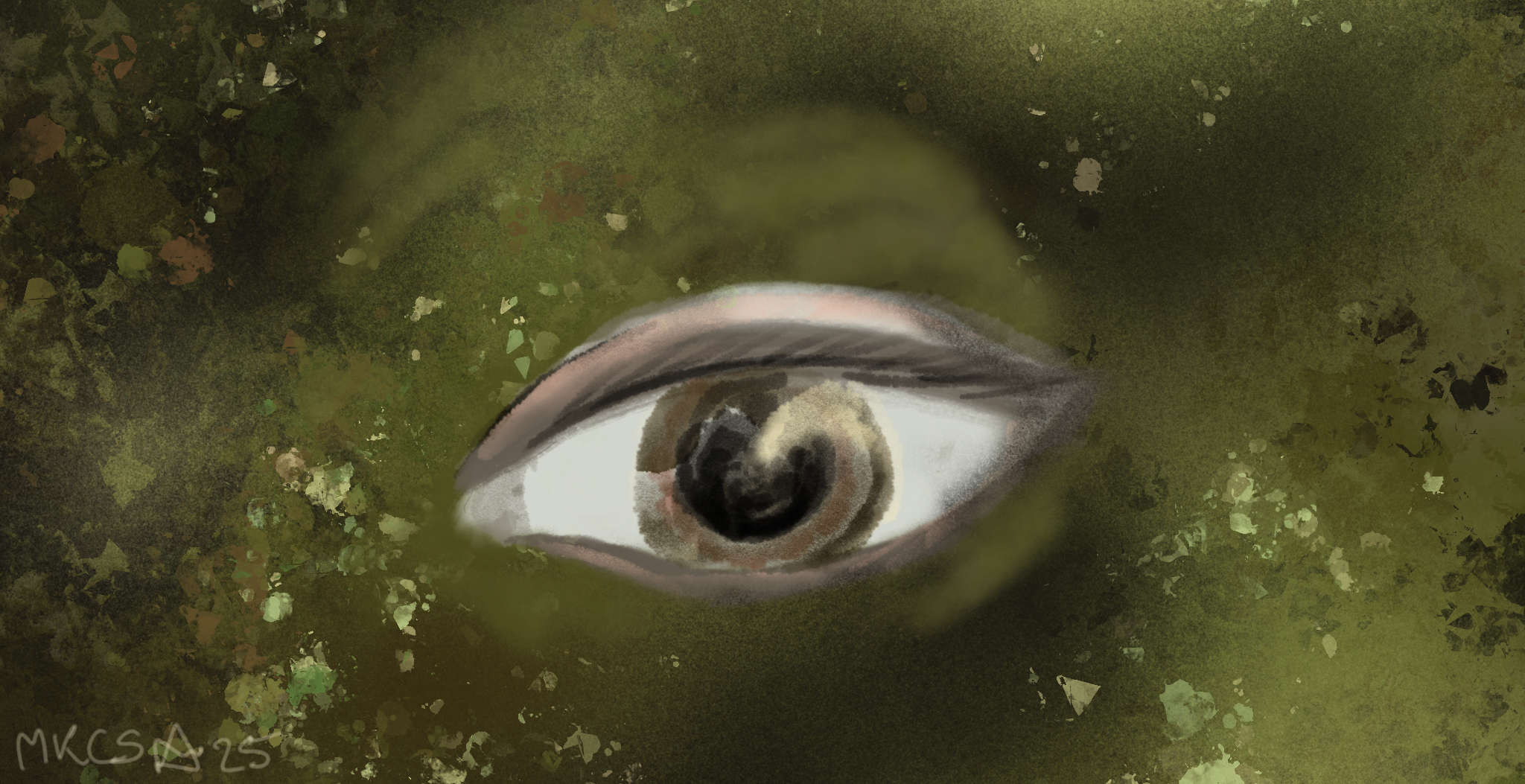The Undying in Diana Wynne Jones’s Dalemark series
The way magic works in Diana Wynne Jones’s Dalemark series is interesting, and the natures of the magicians are even more so. In this post I’m going to look at how Jones uses the magic system she develops in the series to craft a statement about the value of writing.

The way magic works in Diana Wynne Jones’s Dalemark series (Jones, 1975, 1977, 1979, 1993) is interesting, and the natures of the magicians are even more so. In this post I’m going to look at how Jones uses the magic system she develops in the series to craft a statement about the value of writing.
Magic comes in these books from nature and from creation. The natural world is shown as being intrinsically powerful, in the form of wind, waves, flowing water, sound, and light — the power of physical energies. Powerful beings take form as shadows, light, earthquakes, rivers, and the sea.
The act of creation, whether it be composing a song, weaving, writing, drawing, or sculpting, seems to allow people to harness this natural power by directing its force through a combined focusing of attention and creation of something new.
Old songs of power exist and are used, but have absolutely nothing on a fifteen-year-old who has been thinking hard about one topic for the last five years and has just found exactly the right words to say it. This moment of passionate clarity is the peak of magical power, able to move mountains and reshape the physical world. Older beings are oftrn implied to have more power, but never do anything so concrete or devastating. They are harder to notice and more like a pervasive atmosphere than forces with the ability to create change.
All magic seems to come from some form of creativity. Even the immortal evil of the wizard/demon Kankredin is fundamentally carried out through the harnessing of fluid motion with hand-crafted knots and nets.
Most magicians in these books are members of a group called ‘The Undying’. These humanlike beings are all said to be descended from the most powerful of their kind, known only as the One.
We know quite a lot about the One. The One is the River — prehistoric Dalemark’s main waterway — he’s a small metallic sculpture of a man, sized for easy carrying by a group of children, and he’s a tribal god, worshipped not only by the people who live on his banks, but also by people who have lived in other lands for long enough to have an almost entirely distinct culture. He has alternate names: Oreth, Adon, and Amil. He tells us that he has been ‘bound’, and he is unhappy with this.
Except we also know that a man called Closti fell in love with the River, and she was the mother of the protagonist of The Spellcoats. Not the One, but a woman, very much in the vein of J. R. R. Tolkien’s character Goldberry. Her name is given as Anoreth. When she was dying, Closti carved a wooden figure of her to worship as a god — the Lady. This figure is treasured by her magician youngest son, Duck, and recognised as their mother before the end of the book by her magician daughter, Tanaqui.
And then there is the Younger One, the Red River, Tanamil the magician — also simultaneously a small sculpture, a waterway, and a man. He’s apparently not a close blood relative of Tanaqui’s mother, despite definitely being Undying, and also being a river that connects directly to the River. It is possible that not all the Undying are necessarily from the one stock, despite comments being made by at least one character that they all descend from the One. Or it could simply be a distant relationship. Or even just that rivers don’t actually have blood.
We are told that Anoreth means ‘unbound’, suggesting that the One’s name of Oreth is more of a description, ‘bound’. Tanaqui’s name is stated to mean ‘younger sister’ and Tanamil is the younger river. So Amil presumably means simply ‘river’. Adon is the title of a ruler — there is a prince called Kars who uses the title as well, and his heir Hern takes the title when Kars dies. Despite the One having no less than four names, we don’t actually have any personal name for him at all.
Tanaqui’s mother’s name of ‘Unbound’ suggests that she is less a separate being from the One, and more an untamed and uncontrolled aspect of him. They are the same river, seen by different people in different ways. Worshippers see the river as a provider and a protector, while Closti saw it as beautiful and approachable. (Although he also appears to have been religious enough to see it as a god at the same time.)
The Undying look like humans. Except when they don’t, because they are impossible to look at, being seen only out of the corners of the eye, as shadows, or in short glimpses that turn out to be natural features of the landscape. How easy they are to look at seems to vary depending on the power level of the Undying entity, and the emotional state of the beholder, with higher power levels or more placid emotions resulting in less visibility, and lower power levels and heightened emotions both resulting in more.
The One was ‘bound’ by a witch. Others of the Undying are also bound; a state that seems to be connected with being worshipped by humans, named by humans, or perceived accurately by humans. Mitt in The Crown of Dalemark deliberately avoids having accurate portraits drawn and uses a nickname, specifically to avoid this fate, and remains mobile and fairly human. Old Ammet, who is so well known by name that human worshippers have made his name the most common one in the land, doesn’t even seem to be able to take human form any more, appearing instead as a bull or a wave.
Human awareness of the Undying seems to lock them down into defined roles, defined powers, and restricted freedoms. It takes away their flexibility, while giving them greater power: the bound One is easily the mightiest of the Undying, with Old Ammet a near second, while the unbound Mitt in The Crown of Dalemark seems to have little power beyond maybe some extra agility (and immortality).
The children of the River have the potential for power, but that is all. They don’t show huge power unless and until they become bound as deities. Tanaqui the Weaver reshapes the land. Her sister Robin, who has spent her life being as normal a woman as she possibly can, isn’t even immortal. And their brother Duck manages to excape being bound into godhood through the idea that he is drawing on power from outside, as a wizard, rather than using his own, as a god. He is immortal, but not quite deified.
in origin, the Undying seem to be a mixture of nature spirits — personified features of the landscape like Tolkien’s Goldberry (1954) or Japanese kami — and the children resulting from unions between these spirits and humans.
The mixed children appear to have at least some volition in how human they are. They can use the power that is available to them, becoming Undying, or avoid it, staying human. And if they use the power, they are vulnerable to the same risk as their inhuman parents: if humans see the power and worship them, they will become gods. And as gods, they will be bound into roles, becoming less and less individual as their deification progresses, on a spectrum from the Weaver, who is a minor deity that avoids worship and retains most of her selfhood, through Libby Beer and Old Ammet, local gods with personal relationships with worshippers, to the One, who cannot directly interact with anyone, even his descendents, who no longer actually has a personal name at all.
This seems a lot like a personal tragedy for the deity, even as their care and power are valued by their worshippers. At the very best, it is a massive loss of agency. The One, who is the River, has even been constrained so far from his origins that the children’s mother has arisen as the spirit of the same body of water, because he appears to have lost enough of his connection to it that it made sense for Closti that the river he loved was a woman, incarnated separately from the One he worshipped.
Being bound by human belief also makes the gods’ power accessible to humans. In Drowned Ammet, Ammet and Libby Beer are bound by a prophecy to support the destined king — whichever man called Alhammitt happens to take up the claim of kinghood. The One’s power is able to be used by the wizard Kankredin, through a physical and metaphorical binding on the River.
Unbound, the Undying are nature spirits, somewhat powerful, but able to roam, to change, and to fade out of being. Bound, they are gods — immortal and with the full power of their worshippers’ beliefs, but fixed, and required by their nature to act in accordance with those beliefs.
The One wishes fervently to be unbound. Tanamil wishes to be unbound. Gull, Tanaqui’s older brother wishes to be unbound.
Tanaqui’s actions at the end of The Spellcoats are very similar to those of Jamie in Jones’s later book The Homeward Bounders (1981), the tragic hero who sacrifices himself for the people he loves.
At the start of the book, Tanaqui has wanted to take actions that affect the world, to be a saviour, like her elder brother, and to have power. She gets all of that, but at the cost of her freedom. Like Jamie, she knows she is doing this. She has counted the cost and accepted it. Unlike Jamie, she also knows she won’t be completely alone — she has immortal family. But it is still a limitation. She is taking on the mantle, which she herself has woven, of the Weaver of Fate. She will have a role enforced by others’ belief, and she will not be able to stop, just because she becomes tired of it or wants to do something else.
But Gull will be free. The One will be free. Her sister Robin will be able to escape queendom, to come together with the freed Tanamil, her true love.
In their fantastic podcast, 8 Days of Diana Wynne Jones (2024), Emily Tesh and Rebecca Fraimow suggest that the protagonist in The Spellcoats is not actually Tanaqui, because she is recording someone else’s story: that of her brother Hern.
I think this analysis is based on an understanding of the book that misses the sacrifice Tanaqui makes. (It is, to be fair, not spelt out that clearly.) If we do not see Tanaqui’s unbinding of the One as being also her acceptance of an unwanted godhood, then her act ceases to be the climax, and we are left with her siblings as the only ones who have climactic moments in their stories.
However, if we do see it that way, it is a very effective climax. And we know, from both the end notes of The Spellcoats and The Crown of Dalemark that Tanaqui is indeed bound into the role of the Weaver deity. It is both ironic and a little sad that. Tanaqui wants to be a recognised hero but is stopped by her society’s sexism, and Jones hid her heroism so well behind a truly complicated maze of hints and clues that it is possible to miss it completely, as it falls between the narrative and the end notes.
The protagonist of a book is the person whose development the book has focused on and for whom the climax of the book is most personally relevant. Hern has undoubtedly had character development, but a lot of it was offstage, and he has no epiphany to match the book’s climax. Similarly, Robin has major life events that happen at the time of the final battle and earthquake, but her active role in the plot has already passed.
Like Jamie, Tanaqui is the narrator, but also like Jamie, it is her self-sacrifice at the end of the book that frees her loved ones. The moment when Tanaqui unbinds her ancestor’s power, while simultaneously accepting that she will become bound by her act, is the climax of the plot. Her brother Hern’s war and eventual kinghood, and sister Robin’s near-tragic love story, are secondary plots, interesting mainly as providing the motivation for Tanaqui’s heroic act of storytelling.
It is notable that Tanaqui’s heroism takes the form it does. Making the protagonist the storyteller is not uncommon. Making an act of publication, by the storyteller, into the main act of heroism is less so. Tanaqui’s sharing of her writing with the world is a very literal sharing: she places it onto the idol of the One at the headwaters of the river, thus giving it immediately at literally to the Riverlands, but also to her eventual scholarly audience. (I cannot help but think of King Alfred’s metrical epilogue to Boethius‘ Pastoral Care.)
In The Spellcoats, Diana Wynne Jones is telling us that the act of storytelling itself can be just as valid and as interesting as an epic romance or a famous victory. It is a brave act in its own right, directing our attention as readers straight onto the author and her courageous act of writing and publishing the book we are reading.
Jones is playing with the Fourth Wall and daring us to step right through it as it tumbles down.

